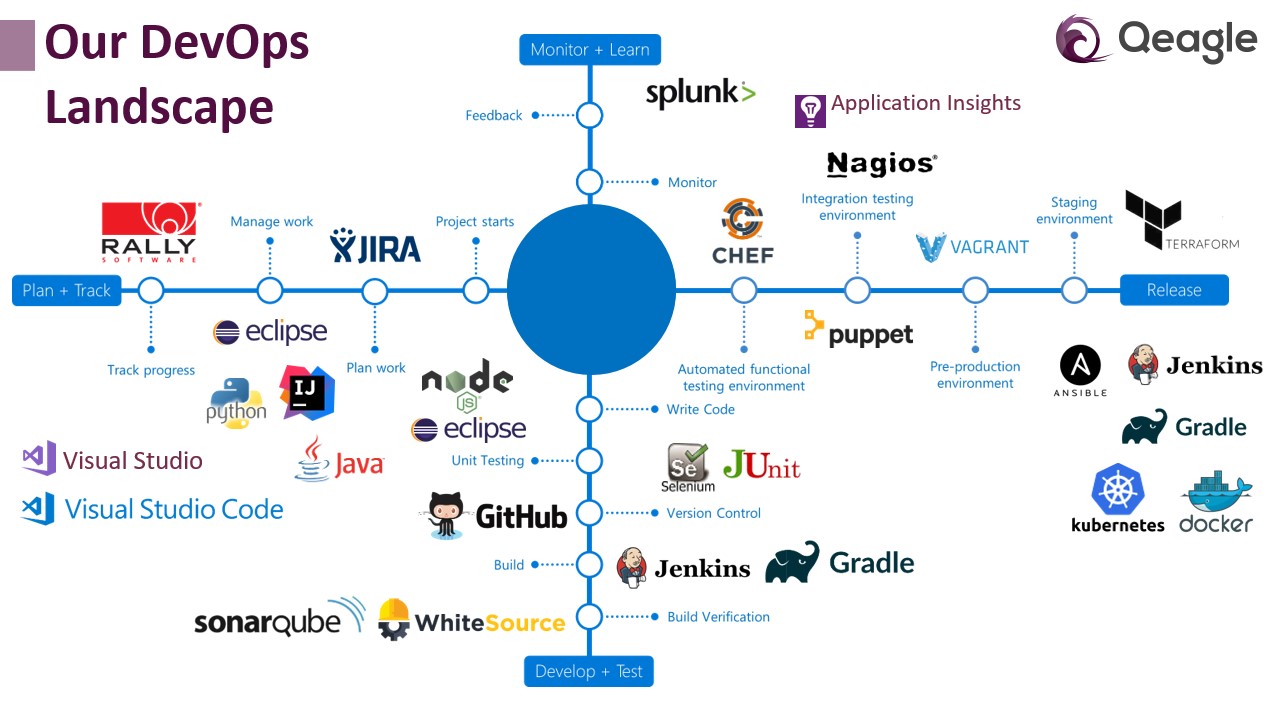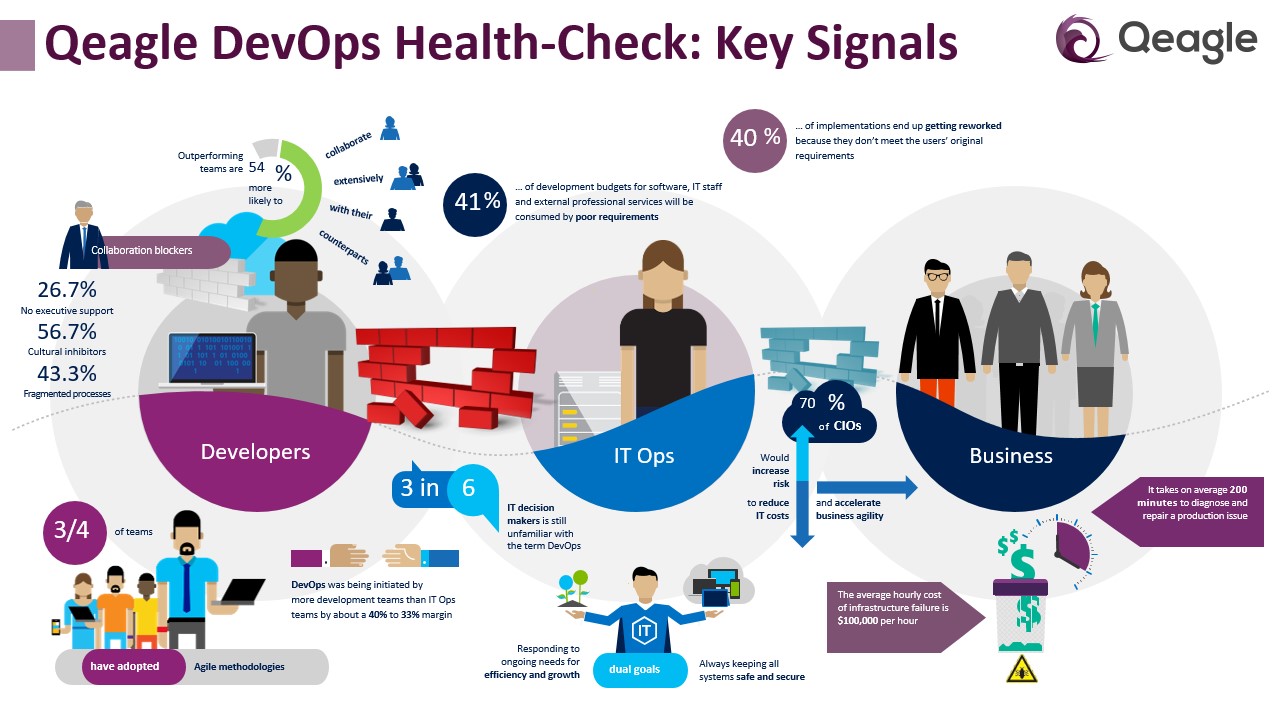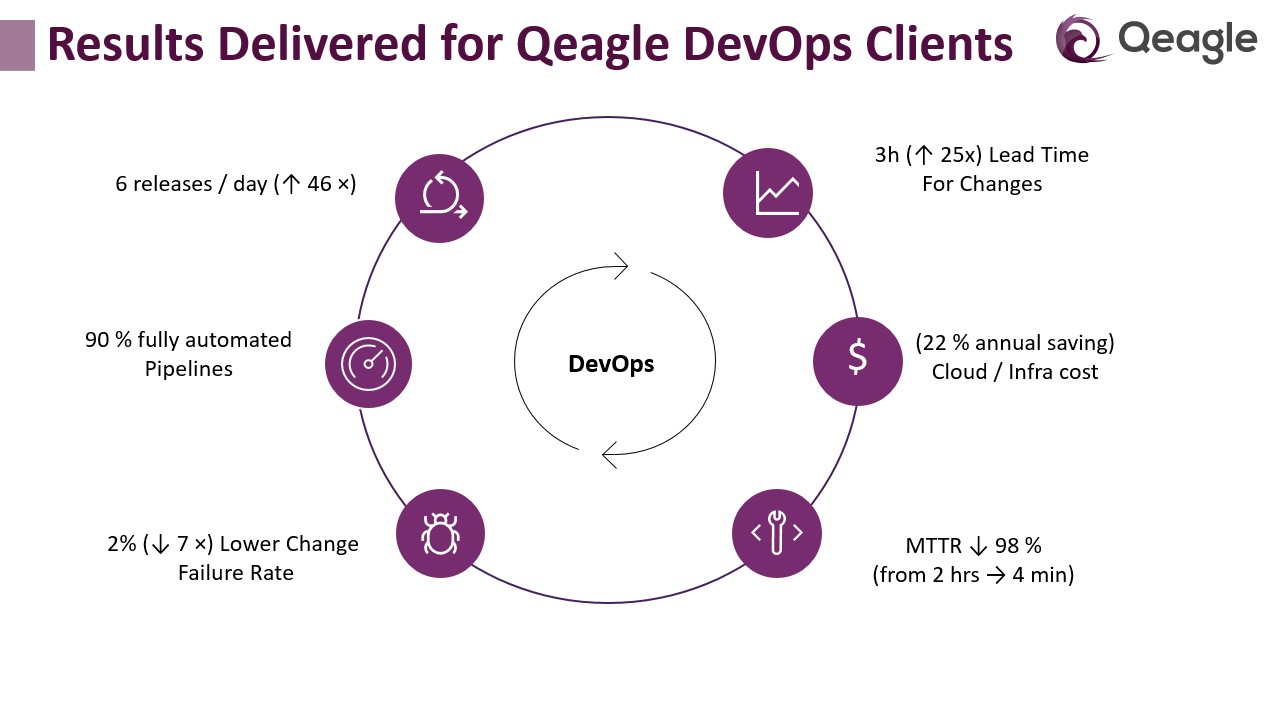A leading digital banking platform wanted to accelerate its software release cycles while ensuring top-tier product quality. Although they had automated ~50% of their functional test cases, their testing processes were still manual in triggering, execution, and reporting. Slow feedback loops delayed releases, impacting time-to-market for new features and compliance updates.

Challenges
Siloed Development and QA Teams: Lack of collaboration between Dev, QA, and Ops delayed defect resolutions.
Manual Test Execution: Automation scripts were run manually, causing delays and inconsistencies.
Slow Feedback Cycle: Test results were not integrated into the CI/CD pipelines, causing bottlenecks in early-stage validation.
Environment Provisioning Delays: Test environments were manually provisioned, increasing lead time.

Our Approach: Integrating DevOps with Test Automation
1. CI/CD Pipeline Integration
- Integrated automated test suites into Jenkins pipelines for continuous execution on every code commit.
- Configured pipelines to trigger Smoke, Regression, and API tests across multiple environments.
2. Shift-Left Testing
- Encouraged developers to run unit and API-level tests in their local environments before committing the code.
- Automated static code analysis using SonarQube as part of the pipeline.
3. Infrastructure as Code (IaC)
- Used Docker and Kubernetes to spin up test environments on demand, reducing environment setup time from hours to minutes.
- Provisioned parallel execution environments using containers for faster feedback.
4. Test Reporting & Feedback
- Centralized test results in tools like Allure and ELK stack, giving real-time dashboards to Dev and QA teams.
- Integrated Slack & Microsoft Teams notifications for immediate visibility of pipeline health.
5. Continuous Monitoring & Feedback Loop
- Introduced automated monitoring scripts post-deployment to verify application health.
- Improved collaboration using DevOps ceremonies (daily stand-ups, retrospectives) across QA, Dev, and Ops.

Results Achieved
| Metric | Before DevOps Integration | After DevOps Integration |
|---|---|---|
| Test Execution Time (Smoke Suite) | 60 minutes | 8 minutes |
| Regression Cycle Time | 2 days | 3 hours |
| Defect Leakage to Production | 15% | 4% |
| Environment Provisioning Time | 6 hours | 15 minutes |
| Release Frequency | Monthly | Weekly |
Key Takeaways
Implementing DevOps practices in test automation dramatically improves release speed and product quality.
Early-stage automation with continuous feedback loops reduces defect leakage and improves developer productivity.
Infrastructure automation accelerates environment readiness, supporting agile release cycles.















